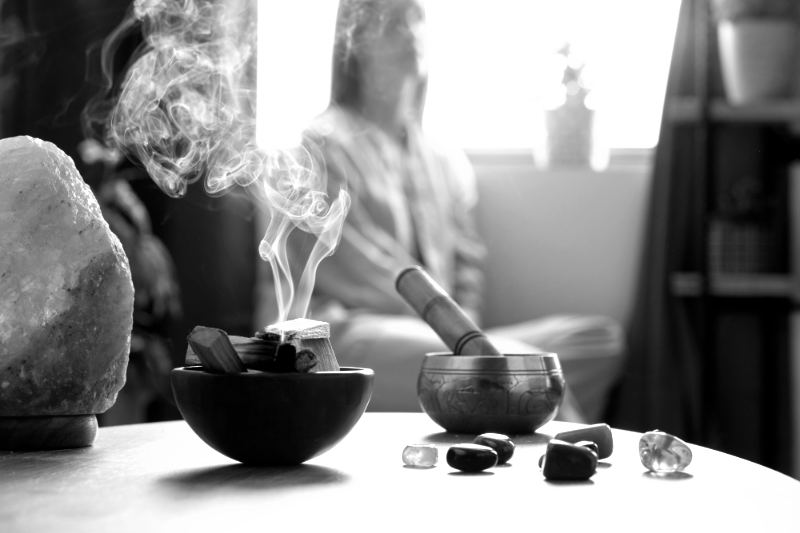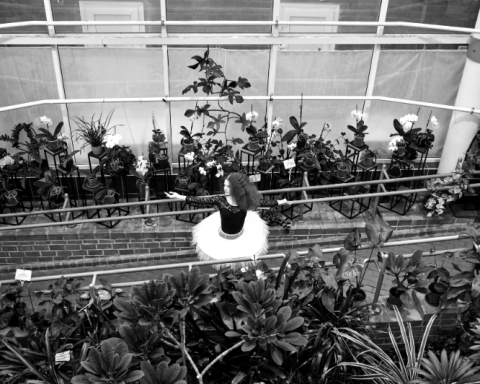For millennia, cultures around the world have devised original methods that engage the mind, body, and soul. They come from their independent traditions, environments, and ideas. These practices guide individuals looking to improve their general well-being. It’s a treasure chest of knowledge that involves several generations, and it’s time to go deeper.
Imagine yourself as a curious adventurer seeking the secrets of life and happiness across time and space. Whether in calming Japanese gardens or warm Nordic surroundings, each culture provides unique insights into well-being.
These are just a few examples of the many well-being practices that await you. So, set off on this incredible journey to discover well-being secrets from around the world. Discover the ancient knowledge, time-honored rituals, and holistic techniques that have influenced the lives of countless people.
Your journey to overall well-being begins right now. Dive in to open your mind to new possibilities for a happier, healthier you. You’ll be surprised at how simply these habits can be introduced to your daily life.
The culture of well-being around the world
Humanity’s journey has been an interconnected web of experiences, with each culture adding its own colorful tile to the image of well-being. The history of wellness is rich and diverse, ranging from the East’s ancient understanding of harmony with nature and inner calm to the West’s focus on physical health and mental toughness.
Understanding how different societies encourage physical, mental, and spiritual health offers an additional perspective on life. Exploring these can help you find practices that connect with your own culture. Also, understanding other cultures’ knowledge helps build empathy and respect, overcome differences in culture, and make the world more harmonious.
Exploring different cultures’ ways of well-being offers insights that can also help you change your own culture’s harmful ways of life. Learning from cultures that promote balance and mindful eating, for example, will give you new ideas for healthier living. Especially when your culture consists of stressful work or unhealthy eating habits. This helps remove false beliefs and promote empathy.
Exploring different cultures’ well-being tips is more than just an intellectual exercise, as it is a journey of self-discovery.
Read more: Unveiling Cultural Influences on Living Room Arrangements and Décor
Global well-being concepts you should implement
Before discussing specific cultural practices, it’s important to consider the big picture. Many of these well-being beliefs have a common thread: they focus on balance, harmony, and connection.
These ideas, whether about seeking inner peace, strengthening relationships, or living in peace with nature, are universal. Throughout time and culture, a priority on well-being has consistently helped individuals. So, by adopting these behaviors, you can, too, join in on these universal traditions.
It is critical to note that these well-being practices are not only defined in tradition but also proved by studies. Research confirms that mindfulness, connection with nature, and a sense of purpose are necessary for living a healthy and happy life. These global concepts provide frameworks for incorporating these elements into your daily routine.
You can start by exploring these wellness tips from around the world:
Hygge from Denmark
The Danish concept of hygge (pronounced “hoo-gah”) represents the skill of creating a welcoming, comfortable, and pleasant environment. It’s about appreciating the little things in life and finding happiness in the ordinary.
This Danish design idea seeks to create warm, inviting places that enhance your spirit. To bring hygge into your home, follow these simple steps:
- Cozy corners. With natural light, warm colors, and soft textures, create a cozy room that invites relaxation. Include your favorite books, plush pillows, and warm lighting. Whether it’s a reading spot by the window or a corner of your living room, make it a place to unwind and relax.
- Mindful moments. Enjoy the little things in life, such as a cup of tea or a good book. Do this by being in the present moment and relaxing without distractions. These mindful moments can improve your overall well-being and minimize stress.
- Quality time. Make spending time with loved ones a top priority, and enjoy each other’s company. To improve your relationship, plan regular events like game nights or monthly family dinners. These experiences build connections and leave lasting memories, boosting happiness and a sense of belonging.
Read more: Reaching a Higher Sense of Self Through Mindfulness
Wabi-sabi from Japan
Japan has a lovely approach to accepting imperfection called wabi-sabi. It’s about accepting life’s simplicity, cherishing the brief moments, and finding beauty in the imperfections. It’s similar to allowing oneself to be beautifully flawed.
Wabi-sabi is based on Zen Buddhism and Japanese culture and urges you to accept flaws as part of an object’s or person’s unique story.
It asks you to mentally let go of your need for perfection and learn to be at ease with your imperfections. In terms of spirituality, wabi-sabi urges acceptance of the present moment and pushes you to accept life’s changes, finding beauty in the short-lived nature of existence. Here are some ways you can incorporate this in your life:
- Declutter your home. Simplify your space by decluttering to attain peace of mind. Learn to let go of things that are no longer useful to you and concentrate on what is truly important. Doing so will quiet your surroundings and help you clear your head.
- Natural touch. Design your home using natural elements like wood, stone, and plants. A variety of indoor plants, a stone vase, or a grainy wood table help to create a calm and pleasant mood.
- Cherish imperfections. Wabi-sabi will teach you to see the beauty in the handmade and flawed. Embrace objects with unique imperfections, such as a handmade blanket with uneven stitching or a broken piece of pottery. These flaws give your environment character and convey a story.
Read more: Less is More: How Minimalism Transforms Home Organization
Feng shui from China
The ancient Chinese art of feng shui is all about bringing balance and harmony into your surroundings. By designing your environment according to specific principles, you can improve energy flow and increase well-being.
While feng shui is extensively practiced and valued in many cultures for its concepts of harmony and balance, there’s little scientific data on its direct impact on health and well-being. In one study, people who applied feng shui concepts to their bedrooms reported much better sleep quality.
Even though feng shui’s depths can seem challenging, you can put a few fundamental ideas into practice immediately. Through the improvement of energy flow, or “chi,” feng shui can raise your general level of well-being.
Here are some tips on how to apply feng shui concepts in your house to create balance and harmony.
- Clutter-free space. A clutter-free environment is essential for good feng shui, as it blocks energy flow and causes chaos. To begin, organize your belongings and get rid of everything unnecessary. Having neat storage spaces and clean surfaces promotes calmness and clarity of thought, which opens the door for good energy to flow.
- Front door focus. The front doors are the main entry point for good energy into your house, so keep it tidy, well-lit, and welcoming. Make sure it’s free of obstacles and in good repair. Add a fresh coat of paint, a doormat, or potted plants for a positive atmosphere.
- Mindful placement. The way your furniture is arranged impacts how energy moves through your house. Place sofas and chairs facing the entrance to create a feeling of security. Don’t place furniture in front of the door to avoid obstructing flow. Use rounded edges rather than sharp corners to create a more harmonious setting.
The Mediterranean diet from Southern Europe
Mediterranean people tend to live long and healthy lives because of their healthy lifestyle. A study done within the blue zones found that the Mediterranean diet plays an important role in improving lifespan. This diet is about how you eat, not what you choose to eat — sharing meals with family and friends, tasting flavors, and appreciating food.
The Mediterranean diet, which suggests whole grains, fresh fruit, and lean protein sources like fish, has been shown to have many positive health benefits. This dietary strategy promotes balanced eating habits while promoting fresh, seasonal items.
- Plant-powered. The Mediterranean diet focuses on plant-based meals high in essential vitamins, minerals, and antioxidants. They include fresh and colorful fruits and vegetables such as tomatoes, bell peppers, spinach, and citrus fruits. These colorful foods not only give color to your meals, but they also provide a wealth of nutrients that promote general wellness.
- Whole grains. Use whole grains like quinoa, brown rice, and whole wheat bread instead of processed carbohydrates. Whole grains contain more nutrients and fiber, allowing you to feel fuller for longer and maintain stable energy levels. They also help with digestion, lower the risk of chronic diseases, and improve heart health.
- Healthy fats. Your diet should contain almonds, avocados, and olive oil. These good fats promote general health and heart health, in contrast to processed foods that contain unhealthy fats. Avocados and nuts include important oils, vitamins, and minerals that promote brain function and satiety; olive oil contains antioxidants.
Siesta from Spain
The Spanish habit of taking a brief afternoon nap, known as the siesta, has grown in popularity due to its many positive health effects. This noon break is more than just a chance to unwind; it’s a tried-and-true method for recharging and improving your overall health. Here’s how you can use the power of the siesta to improve your energy and mood.
- Power nap. Even a simple 20-minute snooze can make a huge difference. A short power nap improves alertness, cognitive performance, and mood. It’s a refreshing pause that allows you to face the rest of your day with newfound energy.
- Sleep sanctuary. To get the most out of your sleep, create a sleep-friendly setting. Use blackout curtains to keep your room dark, quiet with earplugs or a white noise machine, and cool to a suitable temperature. This setup will help you fall asleep sooner and have a more restful sleep.
- Consistent schedule. For the best results, follow a regular nap schedule by taking your siesta at the same time every day, ideally between 1 and 3 PM. This helps balance your internal clock and aligns with your body’s natural energy dip. You will have an easier time falling asleep and waking up feeling rested.
- Combine siesta with mindfulness practices. Before falling asleep, consider doing a few minutes of mindfulness or deep breathing exercises. This can help you relax and fall asleep more easily. After your siesta, you may feel physically refreshed and mentally recharged, with increased clarity and peace.
Read more: From Zzz to Zen: Crafting a Balanced Life Through Better Sleep Habits
In conclusion
By exploring health secrets from around the world, you widen your understanding of life, and provide fresh insight into its many opportunities. In addition, exploring these customs can help you appreciate your heritage by exposing its strengths and areas for growth.
Use these secrets daily to create a customized wellness routine that connects to you. Remember, the key to enjoying the benefits of these habits is to explore and discover what works. Small steps can result in big changes, whether creating a hyggelig space or introducing more plant-based foods into your diet.
Start embracing these global health practices into your daily routine today and witness how small changes can lead to a more balanced and fulfilled life.
If you would like to see more resources on well-being in living spaces, check out the Wellbeing Science Labs. The lab uses the research of the Institute for Life Management Science to produce courses, certifications, podcasts, videos, and other tools. Visit the Wellbeing Science Labs today.
Photo by Freepik




